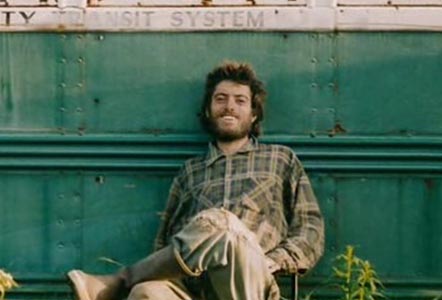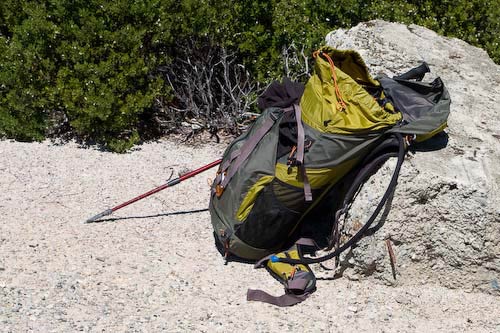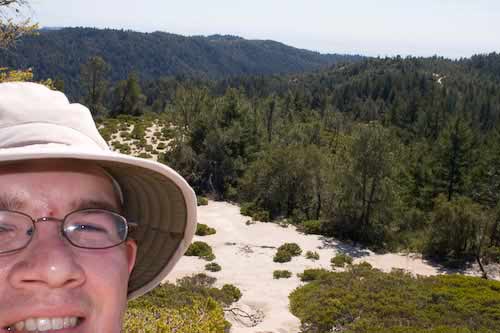A few years ago at Stanford, I learned about the movie Into the Wild from my roommate Eric. He rented it, and I noticed a few seconds out of the corner of my eye. Then it passed out of memory until the recent reemergence of my wanderlust
I finally got around to reading the book on which the film is based, which is itself an extended version of an article that first appeared in Outside magazine called “Death of an Innocent.” It recounts the life and eventual death of Chris McCandless, who gave up a life of privilege after graduating from Emory and chose to live as a tramp. Eventually, he ended up in the Alaskan bush, where survived for over 100 days before succumbing to starvation. (Coincidentally, Eric looks quite a lot like Emile Hirsch, who plays McCandless in the movie.)

Chris McCandless in front of the bus in which his body was found.
Although the book is well-researched, and the movie is enjoyable, I found it difficult to relate to the protagonist. Chris is clearly a smart kid, with Harvard Law apparently within his grasp, but his thirst for adventure and extreme overconfidence serve to put him in situations that are intractable, perhaps even selfish. I can’t see myself having the same disregard for my safety.
My experience in the wilderness (many weeks spent backpacking and canoeing beyond the range of cell phones) and education as a boy scout (Eagle Scout here) has led me to embrace minimalism in my gear, true, but I don’t go out there bare-skinned. I give considerable thought to my equipment. I bring topographic maps, I bring sufficient food, I bring clothing and shelter adequate for the conditions. When I go, I am prepared.

My backpack during a trip in Big Basin, California
I will concede that there is a certain appeal to survive with little more than a sharp hatchet. If you were to stick me in northern Minnesota — ill-equipped — and challenge me to survive off the land, I’m reasonably confident that I could pull it off. In the worst case, other humans would never be more than a few hours away. However, based on personal experience and watching lots of Survivorman, I’m doubtful that it would be a comfortable existence. And if it were in a place less hospitable, like northern Canada, I’m not sure that I would make it out alive.
Survival, of course, is always my goal. I want to experience adventure. I want to go deep into the wilderness. I want the reminders of civilization to be nothing more than the pack on my back. I want to take risks and scare myself. But I want to come home when it’s done. Unlike Chris, I am not running from anything. When I go, I go for the sake of entertainment.

Looking out from a peak towards the Pacific in Big Basin, California
Chris entered the Alaskan bush near Denali National Park along the Stampede Trail. He was intentionally ill-prepared, having neither the proper clothing for early-season Alaska nor a safe reserve of food. He wanted to go somewhere “unmapped,” so he didn’t bring a map. His only concession to reality was his provisioning of a rifle and ammunition, but even those were poorly chosen.
I mean, if hunting is to be one’s primary source of food, wouldn’t one want the ability to reliably take large game? And if that’s the case, wouldn’t a high-power rifle be appropriate, like perhaps a .30-06?
Not for Chris. Chris took a Remington Nylon 66, which fires a .22 LR cartridge. Surprisingly, he managed to bring down a moose with a gun that’s better suited for squirrels — before losing the moose meat to flies and wolves due to improper preservation.

Remington Nylon 66 rifle (.22 caliber)
In the end, McCandless was done in by what biographer Jon Krakauer suspects was the fungus R. leguminicola. That fungus produces the alkaloids slaframine and swainsonine that, among other things, interfere with digestion, ultimately leading to starvation. He was found dead by moose hunters in August, 1992.
Was it arrogance that killed Chris? Bad luck? Would he have been so cavalier if he hadn’t discovered the old bus he used as a shelter?
I will endeavor to do better on my journey.





Recent Comments